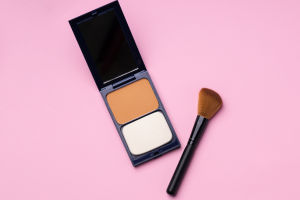Lipstick, a classic item in cosmetics, is an essential part of almost every makeup bag.
Since it became a symbol of modern cosmetics in the late 19th and early 20th centuries, its popularity has steadily risen, becoming an integral part of global beauty culture.
Whether in the fashion industry, entertainment world, or daily life, lipstick plays an important role and has undeniable cultural and market influence. This article will explore the reasons behind the global lipstick craze, its development history, and its significance in different cultures.
Although lipstick has been recorded since ancient Egypt, its modernization and commercialization began in the late 19th century. With the advancement of chemical ingredients and production techniques, lipstick not only became more diverse in color choices but also greatly improved in texture, durability, and safety. This made lipstick not just a basic makeup item but also an important tool for expressing confidence.
In the 1930s, with the rise of Hollywood films, lipstick became one of the signature makeup looks of movie stars. Celebrities like Marilyn Monroe became global icons for their red lips, and lipstick evolved from a cosmetic product to a symbol of glamour.
From this point, lipstick entered the realm of pop culture, becoming an important element for fashion, gender, and self-expression. During this period, many major cosmetic companies launched their own lipstick lines, leading to fierce competition and a growing market demand.
By the 1960s, lipstick colors became even more diverse, especially with the arrival of the psychedelic era. Bold, bright colors like orange, purple, and bright red lipstick quickly gained popularity.
In the 21st century, the rise of social media and beauty influencers further boosted lipstick’s popularity. More and more people began sharing their makeup techniques through videos and photos, with lipstick being the most eye-catching component and an important part of personal style expression.
Whether in Europe, Asia, or Latin America, lipstick has become a must-have in every makeup bag. People from different regions select lipstick shades that suit their skin tones, personalities, and cultural backgrounds. For example, people in Europe and America tend to prefer classic shades like red and pink, while Asians often opt for more natural tones and softer shades.
The consumption model of lipstick has also undergone a significant transformation with the rise of e-commerce platforms. In the past, people typically visited counters to choose their lipsticks, but now, many prefer to buy lipstick online. This shift in consumption not only makes it more convenient for consumers to choose the right lipstick but also enables the rise of many emerging brands. At the same time, it has promoted the diversification and personalization of the lipstick market.
However, with the booming market and intense competition, the lipstick industry also faces a series of challenges. Environmental issues are increasingly drawing attention, with consumers becoming more sensitive to the ingredients, packaging, and environmental impact of lipstick production. As a result, many lipstick brands have started to focus on sustainability, introducing eco-friendly packaging and products with safe ingredients to meet modern consumer demands.
With the continued development of globalization and the internet, lipstick will undoubtedly maintain its place at the forefront of trends, showcasing different charms in various regions and cultures. In the future, innovation in lipstick and personalized customization may become an important direction for the cosmetic industry, further fueling the global lipstick craze.


